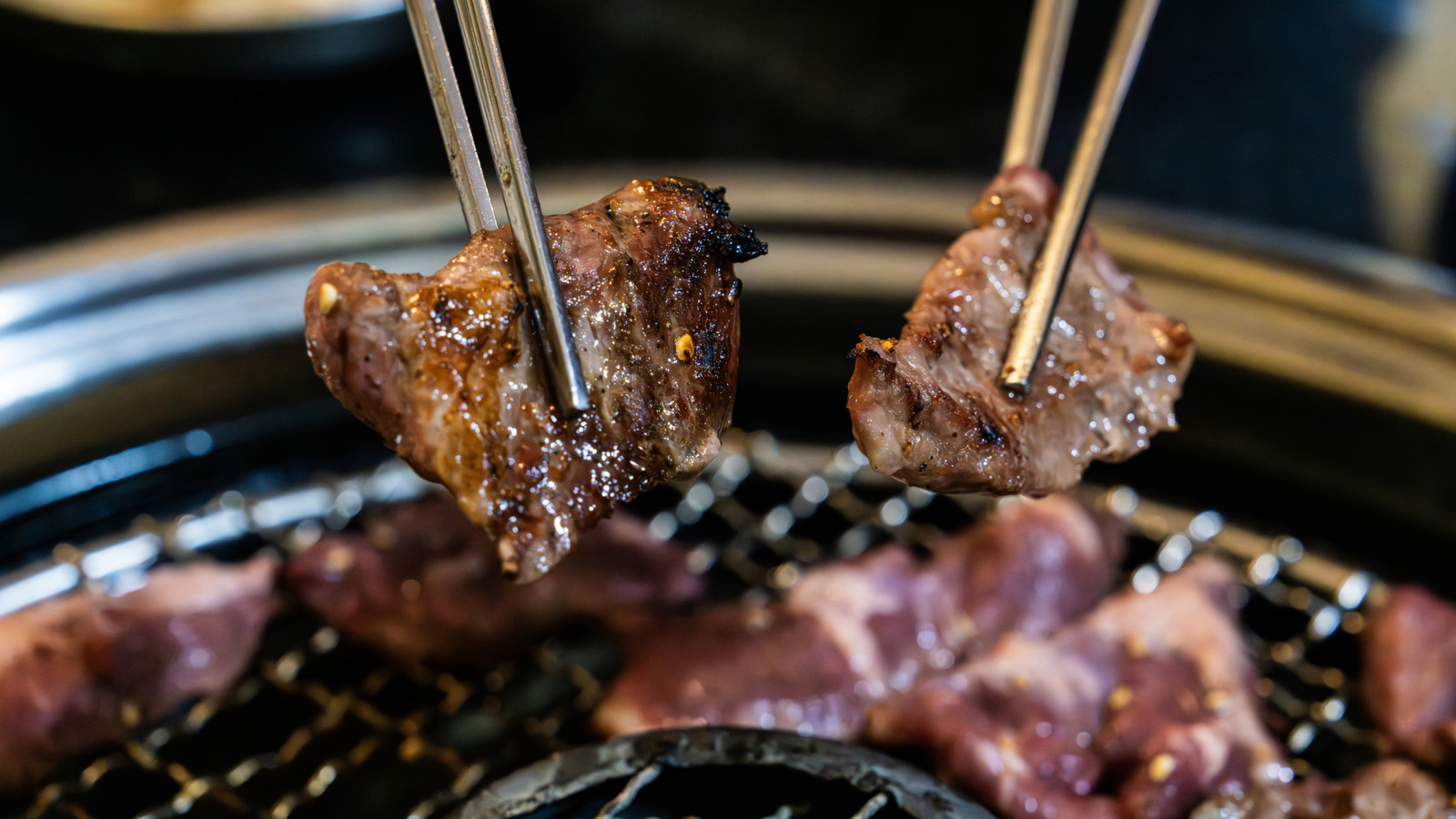We may receive a commission on purchases made from links.
Did you set off your smoke alarms the last time you attempted a Korean barbecue at home? Or is that just your biggest fear as you prepare for one this weekend? Either way — we’ve got you covered. Cooking Korean barbecue at home is an impressive feat, but it comes with challenges that extend far beyond overcooking the meat. The biggest one is your dining room filling with smoke and setting off every alarm in the house. The key to avoiding this disaster starts with choosing the right portable heat source — one that’s compact enough for your dining table and also offers precise temperature control.
The three best portable options you’ll find on the market are an induction stove, a charcoal grill, and a portable butane burner. In his article 15 kitchen tools you need for cooking Korean barbecue at home, Tasting Table writer and Southeast Asian cuisine expert James Hastings picks the portable butane burner as his top choice. While an induction stove allows you to control heat, it’s restrictive because you can only use special cookware on it. A charcoal grill can feel like a more authentic experience, but controlling the heat — and hence the smoke — can prove extremely tricky.
Meanwhile, butane stoves offer the perfect balance of size and control. They’re compact enough to share table space with your banchan and meat platters, and the dial gives you the flame control required to prevent burning your meats (and the smoke clouds that inevitably follow). You can make instant adjustments when the pan gets too hot, ensuring your bulgogi stays perfectly caramelized instead of getting charred.
How to pick the right butane stove for the job
There are other advantages to investing in a butane stove. For one, they are affordable (starting around $20), replacement gas canisters are readily available online, and swapping out empty canisters is really easy. Each canister lasts two to four hours, which makes them useful backup cooking sources when your main stove breaks down or during power outages. Their compact size is an added bonus, allowing for easy storage between barbecue nights. Having said that, it’s important to note that not all portable butane stoves are safe for indoor use.
As these stoves are extremely popular camping accessories, many are designed specifically for outdoor cooking. When shopping for a butane stove for Korean barbecue, look for models explicitly rated for indoor use, such as this Iwatani single-burner portable butane stove on Amazon. Whether you’re buying online or in-store, one good tip is to check for stoves approved for commercial restaurant kitchens. Picking a heat source that allows you to control the temperature is an important first step. The next is understanding common triggers for excessive smoke and how to avoid them.
Three tips to avoid excessive smoke while cooking your Korean barbecue
When it comes to smoke, poor ventilation is the first culprit. While this is not completely avoidable when cooking indoors, try and choose the best-ventilated area in your home for your dining setup. Additionally, fuel leakage and carbon monoxide poisoning can be a safety concern when it comes to butane stoves (as with any gas source). To prevent accidents, always ensure gas canisters are properly secured and check all connections before lighting up. If you detect any gas smell, immediately turn off the stove and inspect all fittings.
Overheating your grilling pan creates another smoke hazard. You want that satisfying sizzle when meat hits the surface, which requires high heat without overheating — around 450 to 550 degrees Fahrenheit. Test the temperature by holding your hand 12 centimeters (about 5 inches) above the grill; you should be able to keep it there for two to four seconds before the heat becomes uncomfortable. If you can’t hold your hand there for even a couple of seconds, the pan is too hot and your meat will likely burn.
Dirty griddles are the third major smoke trigger. Even tiny bits of old meat stuck to the pan will burn and create thick smoke. Clean your pan while it’s still warm by scraping off burnt residue, then wash it with mild soap. Follow these steps, and you’ll discover that smoke-free Korean barbecue at home is surprisingly achievable — just like this delicious beginner-friendly banchan spread to go with it.







